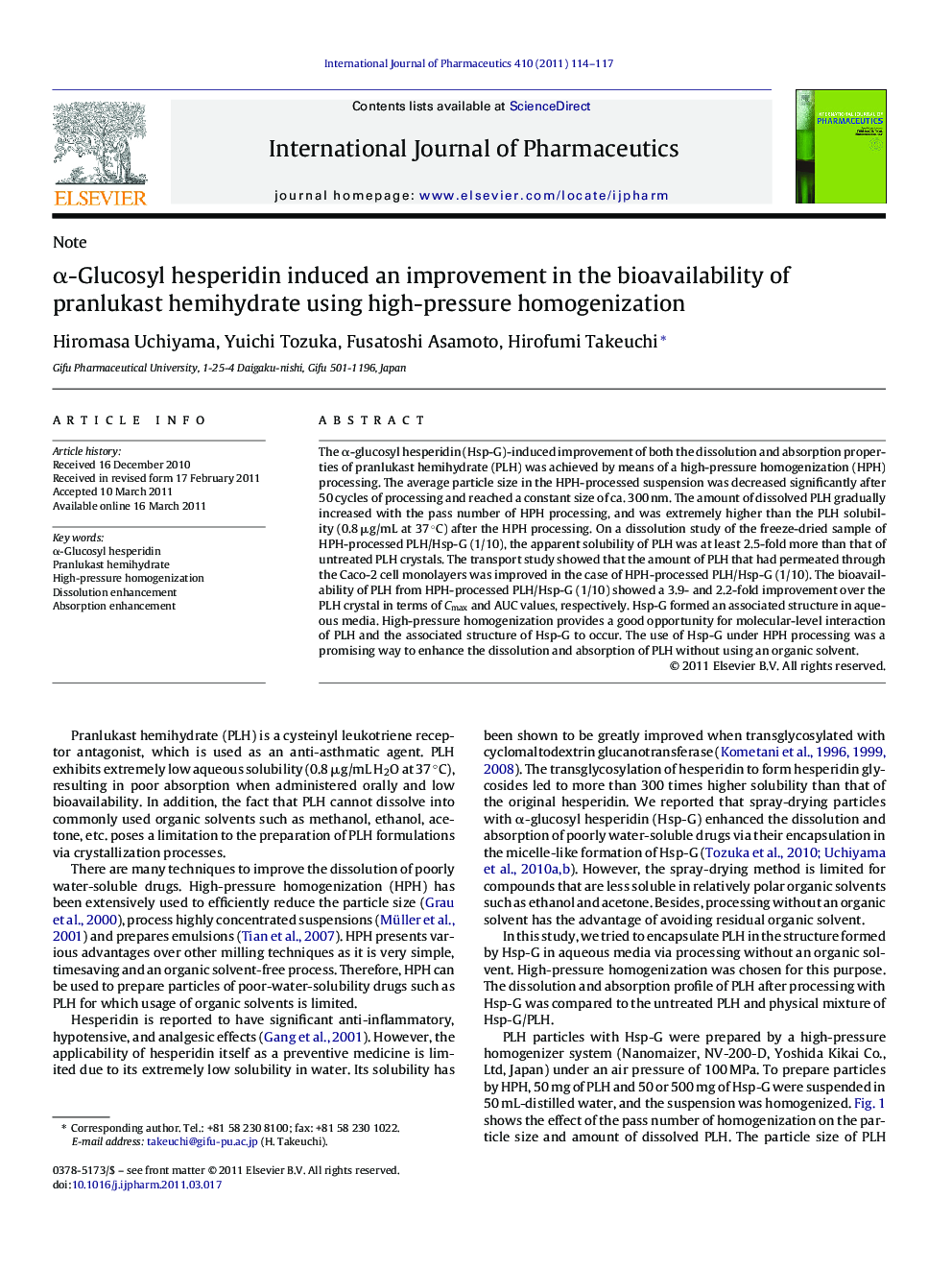| Article ID | Journal | Published Year | Pages | File Type |
|---|---|---|---|---|
| 2503345 | International Journal of Pharmaceutics | 2011 | 4 Pages |
The α-glucosyl hesperidin (Hsp-G)-induced improvement of both the dissolution and absorption properties of pranlukast hemihydrate (PLH) was achieved by means of a high-pressure homogenization (HPH) processing. The average particle size in the HPH-processed suspension was decreased significantly after 50 cycles of processing and reached a constant size of ca. 300 nm. The amount of dissolved PLH gradually increased with the pass number of HPH processing, and was extremely higher than the PLH solubility (0.8 μg/mL at 37 °C) after the HPH processing. On a dissolution study of the freeze-dried sample of HPH-processed PLH/Hsp-G (1/10), the apparent solubility of PLH was at least 2.5-fold more than that of untreated PLH crystals. The transport study showed that the amount of PLH that had permeated through the Caco-2 cell monolayers was improved in the case of HPH-processed PLH/Hsp-G (1/10). The bioavailability of PLH from HPH-processed PLH/Hsp-G (1/10) showed a 3.9- and 2.2-fold improvement over the PLH crystal in terms of Cmax and AUC values, respectively. Hsp-G formed an associated structure in aqueous media. High-pressure homogenization provides a good opportunity for molecular-level interaction of PLH and the associated structure of Hsp-G to occur. The use of Hsp-G under HPH processing was a promising way to enhance the dissolution and absorption of PLH without using an organic solvent.
Graphical abstractFigure optionsDownload full-size imageDownload as PowerPoint slide
